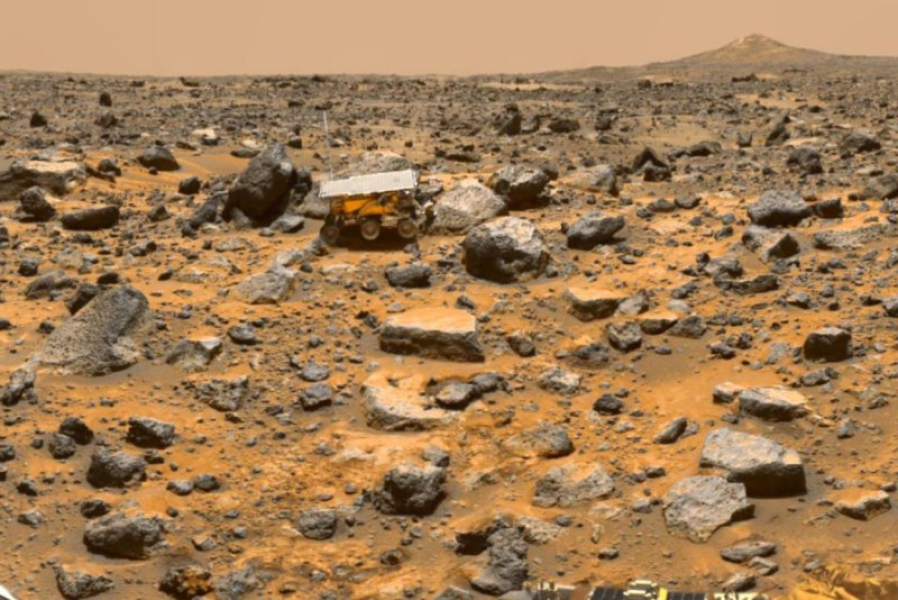
NASA researchers have found evidence that could help shed light on questions surrounding the history of water loss on Mars.
A new study, following years of observations by NASA's Mars Atmospheric Volatile Evolution (MAVEN) mission, shows evidence of a leaky process known as “sputtering,” in which atoms are knocked out of the atmosphere by “charged particles,” according to a NASA press release.
“It’s like a cannonball hitting a pool,” said Shannon Currie, lead scientist for the MAVEN mission and a co-author of the study. “A cannonball in this context is heavy ions slamming into the atmosphere and throwing out neutral atoms and molecules.”
Scientists have plenty of evidence that water was present on the surface of Mars billions of years ago, but they are trying to figure out where it went. Research has shown that after losing its magnetic field, Mars was exposed to solar winds, which contributed to the loss of liquid water into space.
But that doesn't explain why Mars' once-thick atmosphere was so completely stripped away. Sputtering, according to a new report, could help solve that mystery.
“It's like finding ashes from a fire,” Curry added. “But we'd like to see the fire itself, in this case, extinguished, in reality.”
The team used a variety of MAVEN instruments to measure several atmospheric parameters during both daylight and darkness at low altitudes to observe the phenomenon, a process that took many years.
“The combination of data from these instruments allowed scientists to create a new type of map of sputtered argon relative to the solar wind,” according to a NASA press release. “This map revealed the presence of argon at significant altitudes at the precise locations where energetic particles slammed into the atmosphere and ejected argon, showing the sputtering in real time.”
Researchers have identified at least one reason for the loss of water on Mars' surface, but they have also been able to recreate conditions that may have made the planet habitable billions of years ago.
Sourse: www.upi.com





